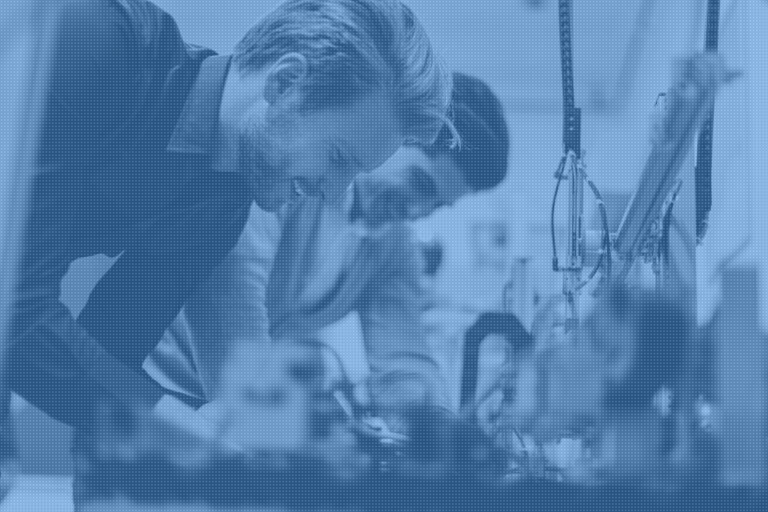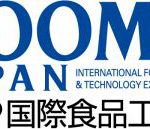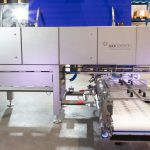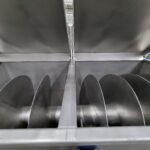The past few months we collected your most frequently asked questions and summarized them in the news item below.
What capacities can be obtained on a continuous mixer?
Sobatech’s smallest continuous mixer produces about 100 kg of dough per hour. The largest system exceeds 10.000 kg of dough per hour. Of course everything in between can be obtained.
How do you control product quality on a continuous mixer?
Sobatech’s continuous mixers constantly measure the (mechanical) energy that is put into the dough. This so called specific mechanical energy (SME) can be expressed as Wh/kg and functions as an objective parameter to constantly control dough quality and development.
Example: imagine a final dough temperature increases due to a higher ingredient temperature as a result of seasonal changes. A higher dough temperature means a lower product viscosity. A lower product viscosity results in less product resistance and therefore a lower SME value. As the continuous mixing system constantly measures this SME value; it functions as a constant control for product quality.
Why should I consider Continuous mixing over Batch mixing?
Generally continuous mixing is chosen when food producers want to increase food quality consistency while keeping operational costs down. Continuously mixed dough is always the same age when it reaches the next step in the production process. With batch mixing, the time between each batch results in dough variations that might be visible throughout the entire production process. Continuous mixing is also valued for its high automation grade; resulting in a product quality that is independent of the skills/performance of the operator.
What kind of products can be made on a continuous mixer?
Any product that can be made on a traditional batch mixer, can be made on a continuous mixer. Click here to see a variety of product applications or contact us to find out which continuous mixer suits your production process best.
Can I produce different kinds of products on one and the same mixer?
Yes, it is possible to produce a variety of different products on one and the same mixing system. The flexibility you have with time on a batch mixer, you have with RPM (shaft speed) on a continuous mixer. Read more about continuous flexibility in this news item.
What does a continuous mixing system cost?
There are still quite some misconceptions in regards to how pricing on a continuous mixer compares to the pricing on a batch mixer. The root cause of this lies in the fact that the cost of a continuous mixing system is often compared to the cost of a batch mixer. Apart from the actual mixer, a continuous mixing system also includes the automatic weighing of the solid and liquid ingredients. Often the price of such complete system is compared to the price of solely a batch mixer (without automatic dosing). Dosing directly at the mixer (in case of a continuous mixing process) results in greater automation and accuracy. Therefore, it is concluded that on the short term this might result in an higher initial investment but on the long term, due to improved consistency and a higher automation grade, in a lower cost of ownership. Continuous mixing payback opportunities come from a number of different sources including increased yield, increased throughput, increased quality consistency, reduced labor cost and reduced downstream handling equipment. Please contact us for your cost of ownership calculation.
How can dough temperature be controlled?
Generally, dough temperature is controlled by regulating the temperature of the process water. If that does not give the required result, Sobatech’s continuous mixers can be equipped with double jackets to effectively heat or cool the mixing chamber. Lastly, for extreme dough temperatures, Sobatech uses its HOT & COOL technology.
How do I clean my continuous mixer?
Sobatech offers a fully automatic cleaning in place (CIP) system on their continuous mixers. Check out this process here.
How do I switch to a different recipe?
The process of switching between two different recipes depends on whether the second recipe can simply push out the first recipe. In that case, we talk about ‘minor changeovers’ that can be done by the push of a button. In case a complete washdown is required; the system will first automatically clean in place whereafter the second recipe is activated. Please note, to what extent the recipes differ; maybe a separate dosing system is required. Read more about continuous flexibility in this news item.
How do I know if I run the correct recipe?
One of the advantages of continuous mixing is the fully automated dosing solutions that are part of it. This because todays gravimetric dosing solutions are the most accurate feeding technologies available. Sobatech dedicated years of time and efforts in designing gravimetric (e.g. loss-in-weight) feeding technologies that are accurate to within .25%. Besides that, the continuous dosing technology constantly monitors all ingredient streams and collects data to guarantee recipe accuracy.
How does the dough come out of the continuous mixer?
On a continuous mixer, dough comes out as a continuous stream of product. This means there is no need for downstream equipment to resize the batches. The dough coming out of a continuous mixer can be directly fed into the receiving hopper of the dough makeup line.
What is the mixing time on a continuous mixing system?
On a continuous mixing system, throughput is controlled by the rate ingredients are fed into the mixer. Mixing time is generally a term related to batch; since it is used to adjust the level of kneading intensity on a batch mixer. On a continuous mixer, the energy input is changed by altering the RPM of the mixing tools. Increasing the RPM of the mixing tool will result in a higher kneading intensity but does not, without a certain bandwidth, influence throughput. This means throughput and kneading intensity are independent variables on a continuous mixing system. This as opposed to batch mixing where a higher kneading intensity is achieved by increasing mixing time; which in turn decreases throughput.





